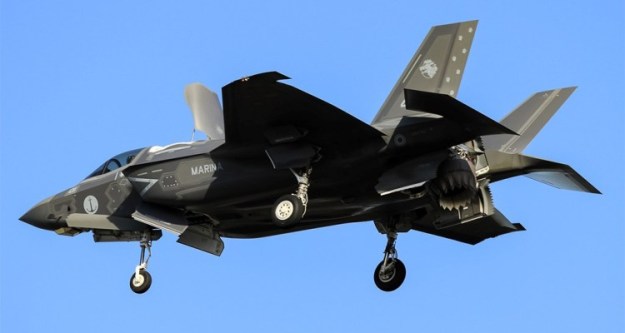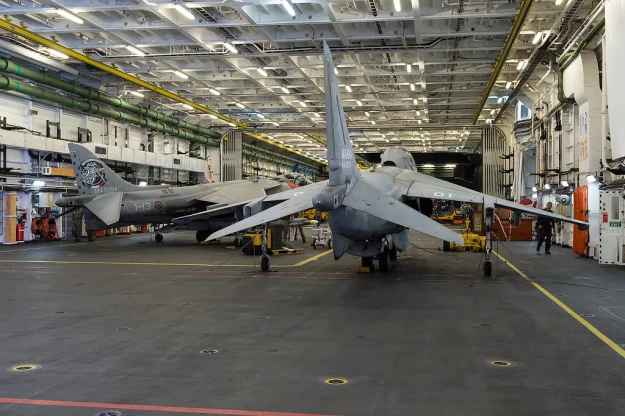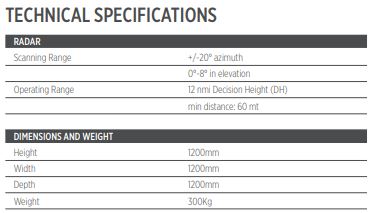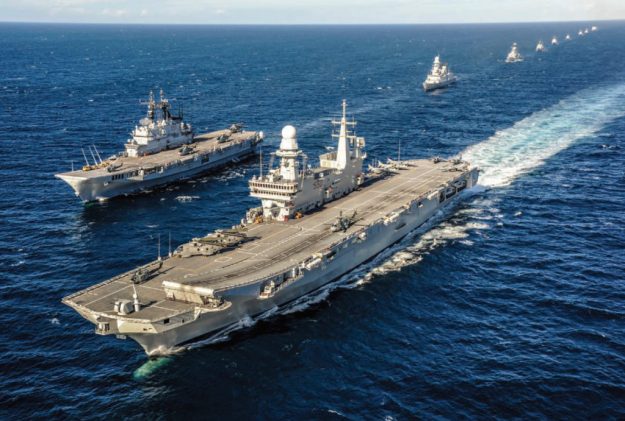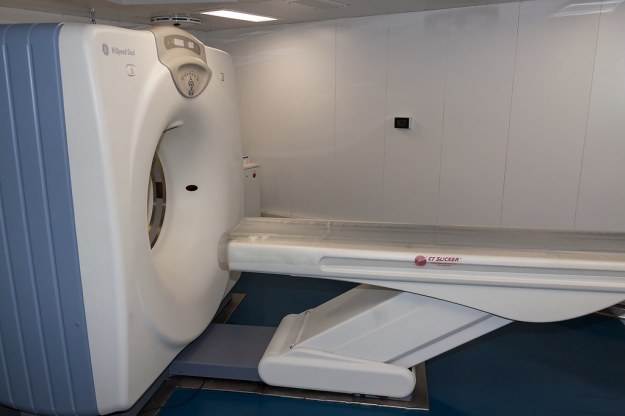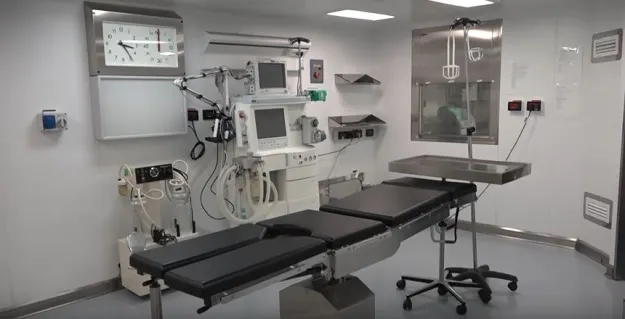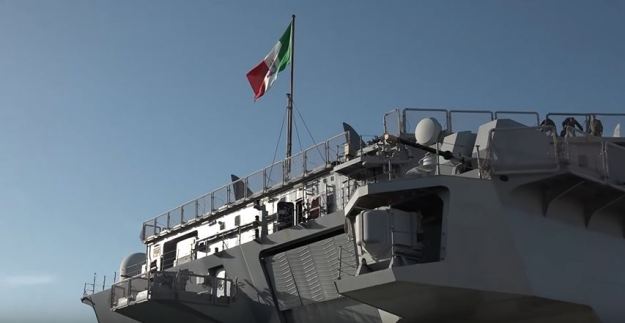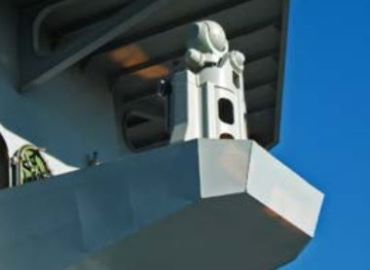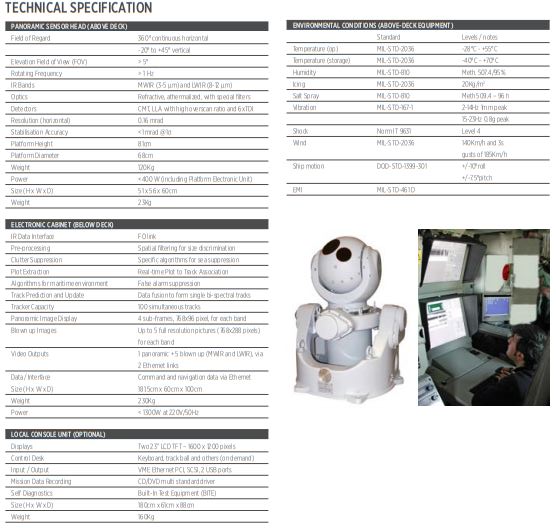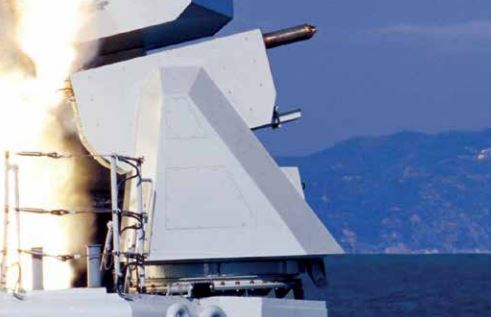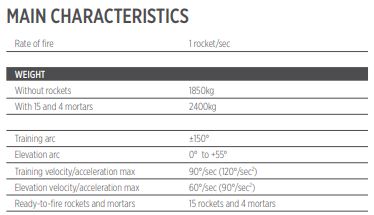On 22 November 2000, a contract was drawn up between Fincantieri and the Italian Ministry of Naval Defence to supply an aircraft carrier vessel, known as the nuova unita maggiore (NUM) or ‘new major vessel’, to the Italian Navy.
Building work on the new vessel, which was originally to be called the Andrea Doria but has been named the Cavour, began at Fincantieri’s shipyards in Riva Trigoso and Muggiano in July 2001.
The Cavour was launched in July 2004 and began sea trials in 2006. The aircraft carrier was delivered to the Italian Navy in April 2008 and entered service in June 2009. Cavour took part in the Haiti earthquake relief operations in early 2010.
Cavour aircraft carrier design
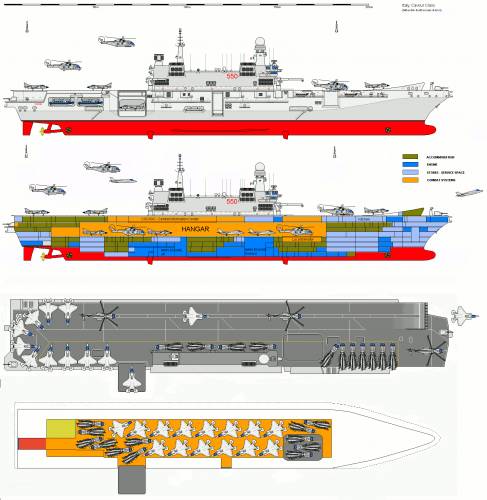
the-blueprints.com
The ship has a standard displacement at full load of 27,100t, an overall length of 244m and a sustained speed of 27kt. The carrier’s runway is 180m×14m with a 12° ski jump. It can accommodate up to 1,292 people on board, including five flag officers/VIPs, 486 ship’s crew, 211 aircrew, an amphibious command force of 140, San Marco Battalion of 360, and an additional 90 troops.
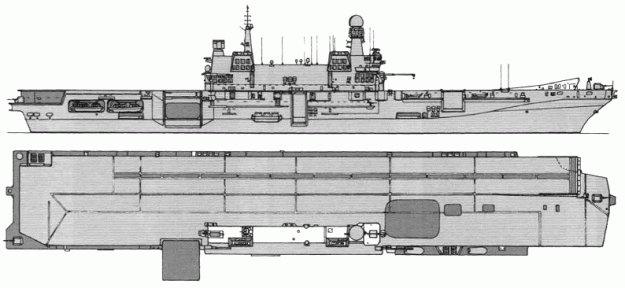
navypedia.org
A strong feature of the ship is its high flexibility in operational terms. It is able to carry out the functions of an aircraft carrier as well as the transport of wheeled and tracked vehicles, for both military and civil missions. The aircraft hangar can accommodate 100 light vehicles or 24 main battle tanks for amphibious missions. The ship can also support four LCVP landing craft. There are two 30t elevators for aircraft and two 15t elevators for armaments.
Aircraft Carrier Cavour Exits Drydock During F-35B Upgrade
November 26, 2019 (Google Translation) – The Cavour aircraft carrier out of the dry dock “Edgardo Ferrati” of the Naval Arsenal of Taranto, after having completed the work of careening began last July 20.
From December 2018 the aircraft carrier of the Navy is continuing the modernization and restructuring works, including the important periodic careening operation in addition to the metallization of the flight deck to contain the thermodynamic impacts of the F 35B aircraft. The work on the hull was carried out by applying a cutting-edge painting cycle in terms of protecting the marine environment.
F-35B: Details
The modernization works will end in the spring of 2020 and were carried out by the personnel of the main national reference industries in the naval field, such as the Fincantieri and the Leonardo, but also thanks to the small-medium enterprise in Taranto, in addition to the workforce competition arsenalizie.
The choice made by the Navy to carry out the transformation works of the Cavour aircraft carrier in the Arsenale of Taranto is an expression of the commitment that the Armed Forces put in support of the city in consideration of the fallout, in economic terms, on the induced territory. Furthermore, thanks to the acquisition of new knowledge, technical, technological and logistic engineering skills, the aim was to enhance the local shipbuilding industry and to face the future needs of the fleet units for the next four years, such as the new Frigates and the new Multipurpose Patrol ‘Height.
The Maritime Military Arsenal is thus confirmed as the most important defense production company, strongly integrated in the productive fabric of the city of the two seas and a driving force for development and growth prospects for national and local industry.
At the end of the maintenance activities, the aircraft carrier Cavour will have to undergo a preparatory training period for the next departure for the United States, where it will conduct some tests with the F 35B aircraft on board.
The ship and its airborne component embarked are specialized capabilities of the Navy , decisive for the security of the country, such as flexible and remotely projectable tools capable of ensuring the defense of national interests “on the sea and from the sea”.
With the entry of new aircraft on the line, the Navy, the US Navy and the British Royal Navy will be the only marinas in the world to have aircraft carriers capable of operating with the F 35 aircraft . Source seawaves.com

Aircraft carrier function
The vessel is equipped with a flight deck suitable both for operations with helicopters and with short launch, vertical take-off fighter planes. It has a hangar / garage of approximately 2,500m² which can also accommodate wheeled and tracked land vehicles.
The ship can support eight VTOL (vertical take-off and landing) aircraft such as AV-8B Harrier or F-35 joint strike fighter VTOL variant, or 12 helicopters, such as the EH101, NH 90 or SH-3D, or a mix of platforms.
Landing operations are supported by the Telephonics AN/SPN-41A radio frequency all-weather instrument approach landing system and the Galileo Avionica SPN-720 advanced precision approach radar and the Thales tactical air navigation (TACAN) system.
Telephonics AN/SPN-41A
The Transmitting Set AN/SPN-41A is an electronic landing aid that provides proper flight path data to an approaching aircraft as the aircraft flies into range of ownship radar landing system or into visual contact with ownship optical landing system. The AN/SPN-41A has two separate transmitters (azimuth and elevation) with individual antennas used for sector scanning. The azimuth transmitter is installed on the ship’s stern at the centerline of, and slightly below the landing deck runway; while the elevation transmitter is located above the flight deck in th e vicinity of the after end of the island to provide the glide slope signal. The AN/SPN-41A uses one-way transmission, ship to air, to a receiver in the aircraft where the angular information is displayed on a cross-pointer indicator. With the vertical needle for azimuth guidance and the horizontal needle for vertical guidance, the aircraft becomes perfectly aligned with the runway centerline, on a standard glide path to the ship’s deck, when both needles are precisely centered. Though not technically a radar system, the AN/SPN-41A operates utilizing pulse mode in the Ku-band. AN/SPN-41 and AN-SPN-41A systems are installed aboard CV, CVN, LHA, and LHD class ships. The AN/ARA-63 aircraft approach control system uses the AN/SPN-41 and the AN/TRN-28 transmitting sets. It provides primary or backup instrument approach capability. Source fas.org
Galileo Avionica SPN-720 advanced precision approach radar
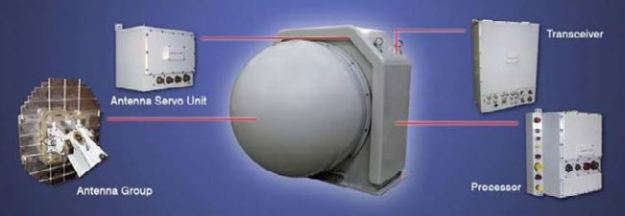
leonardocompany.com
SPN-720 Shipborne Precision Approach Radar SPN-720 is a solid-state , Low Probability of Intercept (LPI) naval Precision Approach Radar, recognised as the smallest PAR available on the market
For the purposes of moving aircraft and vehicles embarked, two elevators are installed for aircraft and there are two access ramps to move vehicles from the quayside to the hangar / garage.
Further features of the ship include a hospital facility with three operating rooms, wards for hospitalised patients, X-ray and CT equipment, a dentist’s surgery and a laboratory.
Cavour weapons
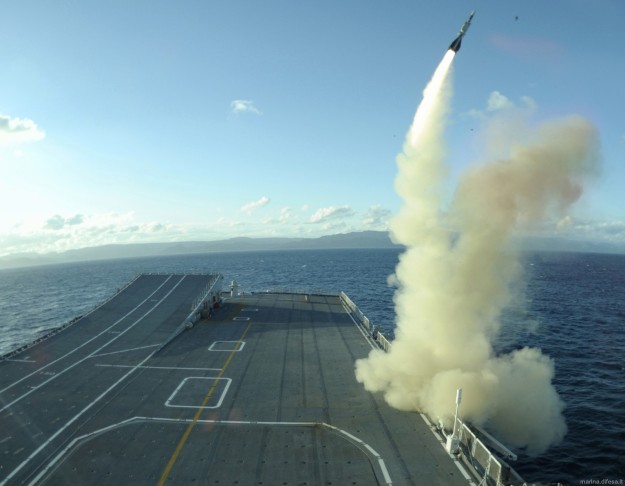
marina.difesa.it via seaforces.org
The carrier is armed with two Sylver eight-cell vertical launch systems for the Eurosam (jointly owned by MBDA and Thales) SAAM/IT missile system, which fires Aster 15 missiles. The Aster 15 missile has a 13kg warhead and a range of 30km. The missile’s guidance is inertial with data uplink and active radar terminal homing. For increased manoeuvrability in the terminal phase, the missile uses a ‘PIF-PAF’ direct thrust control system with gas jets.
2 x Sylver eight-cell vertical launch systems
Aster 15
The ASTER 15 and ASTER 30 are integrated on the SAAM (ASTER 15), PAAMS (ASTER 15 and ASTER 30) and SAMP/T (ASTER 30) air defense systems. These systems will be employed by the armed forces of France, Italy and the United Kingdom.
The two-stage ASTER missiles are provided with two different solid propellant boosters resulting in the ASTER 15 and the ASTER 30 models. The ‘Pif-Paf’ control system enables the ASTER missile to counter high maneuverable missiles achieving a direct impact (hit-to-kill). The ‘Pif-Paf’ propulsion combines conventional aerodynamic control with control by gas jets acting through the centre of gravity of the missile. Until mid-course the guidance of an ASTER missile is based on the Inertial Navigation System (INS) updated through an uplink, in the terminal phase the guidance is provided by an active Radiofrequency seeker. The final stage of the ASTER missile is a ‘dart’ equipped with the seeker, a sustainer motor, a proximity fuze and a blast fragmentation warhead.
The ASTER 15 is a short range missile intended for self-defense (point defense) purposes against highly maneuverable threats. The ASTER 15 is integrated on the SAAM and beginning in 2006 in the PAAMS system. Source deagel.com
Primary sensor for the SAAM/IT is the Selex Sistemi Integrati (formerly Alenia Marconi Systems) Empar G-band multi-function phased array radar, which provides simultaneous surveillance, tracking and weapons control. The first ship-launched missile firing of the SAAM/IT system took place in December 2002.
The vessel is equipped with two Oto Melara 76mm super rapid guns and three 25mm anti-aircraft guns.
2 x Oto Melara 76mm super rapid
OtoBreda 76/62SR Super Rapid with DAVIDE/STRALES guidance system
The Oto-Melara / Oto-Breda 76/62SR 76mm (3-inches) 62-caliber Super Rapid gun is a lightweight, automatic loading, rapid fire naval gun system used against shore, sea and air targets.
Manufacturer: 1963-2001 Oto-Melara / 2001- OtoBreda
Produced: Compact: 1963- / Super Rapid: 1988-
Technical data:
Caliber: 3 inches / 76,2 mm
Barrel lenght: 186 inches / 4,72 meters (= 62 caliber)
Weight: 7900kg, empty (Super Rapid)
Shell: 76 x 900 mm / 12,34 kilograms
Elevation: – 15° to + 85°
Traverse: 360°
Rate of fire: Compact: 85 rpm / Super Rapid: selectable from single shot up to 120 rpm
Muzzle Velocity: 925 m/s (1100 m/s – DART)
Magazine: Compact: 80 rounds / SR: 85 rounds
Range:
16 kilometers with standard ammunition
20 km with extended range ammunition
up to 40 km with VULCANO ammunition
Evolution:
– Compact
– Super Rapid
– Stealth casing
– DAVIDE/STRALES radio frequency guidance system for DART guided ammunition
Ammunition:
– HE (high explosive) – 6,296kg / Range 16km / effective range 8km (4km vs. air targets at elev. 85°)
– MOM (multi-role OTO munition)
– PFF (pre-formed fragmentation) – anti-missile ammunition
– SAPOM (semi-armored piercing OTO munition) – 6,35kg / Range 16km
– SAPOMER (semi-armored piercing OTO munition, extended range) – Range 20km
– DART (driven ammunition reduced time of flight) – sub-calibre guided ammunition against multiple targets
(missiles and maneuvering targets at sea) 4,2kg in barrel / 3,5kg in flight / 660mm lenght / effective range >8km
– VULCANO (76mm unguided and guided extended range ammunition) – under development
Oto-Breda 76/62SR 76mm (3-inches) Source seaforces.org
3 x 25mm anti-aircraft guns
Manufacturer: Oto-Melara (now OtoBreda)
Caliber: 25mm
Weight: 1050 kg without ammunition / 1200 kg ready to fire
Lenght: 3,85 meters
Ready to fire rounds: 252
Ammunition 25x80mm:
– High Explosive Incendiary with Tracer (HEI-T)
– Semi Armor Piercing High Explosive Incendiary with Tracer (SAPHEI-T)
– Armor Piercing Discarding-Sabot (APDS)
– Armor Piercing Fin-Stabilized Discarding-Sabot (APFSDS)
Elevation: – 15° / + 50°
Traverse: 315°
Rate of fire: 570 rpm max.
Range: up to 2000 meters
Source seaforces.org
Combat systems
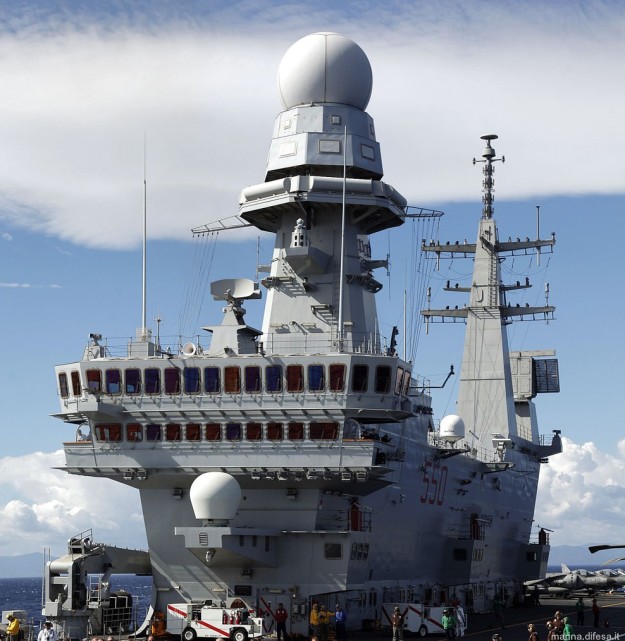
marina.difesa.it
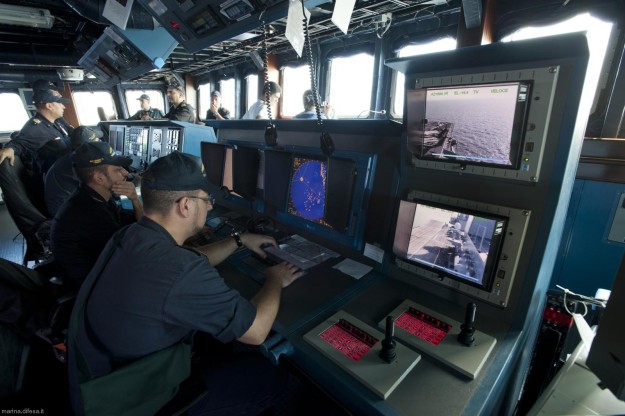
marina.difesa.it
Selex Sistemi Integrati (formerly AMS) is the integrator for the vessel’s combat system and also supplies systems including RAN 40L 3D D-band long-range radar, RASS RASS 30X/I surface radar, surveillance radar, SIR-R interrogation friend or foe (IFF) system and navigation system. Other members of the combat system team include Elettronica, Galileo Avionica and Oto Melara.
MM/SPY-790 EMPAR MFR Radar
The European Multifunction Phased Array Radar (EMPAR) is a rotating passive electronically scanning array (PESA) system that operates in the C-band. The radar provides information regarding the altitude, bearing, and distance of airborne objects within a 150 km radius.[i]With 60 rotations per minute, the radar offers a continuous 360-degree view.[ii] It has simultaneous tracking of up to 300 different targets and, in cooperation with the Principal Anti-Air Missile System (PAAMS) or the Surface-to-Air Anti-Missile System, can engage up to 12 targets at once.[iii] EMPAR can also be integrated with the Principal Anti Air Missile System (PAAMS), providing guidance to Aster 15 and Aster 30 missiles which are used for medium- and long-range air defense.[iv]
Quick Facts
| Role and Mobility | Threat Detection and Tracking; Ship-Mobile |
| Frequency | C-Band |
| Range | 150 km |
| Air Defense Interceptor Systems | Principal Anti-Air Missile System (PAAMS) and Surface-to-Air Anti-Missile System (SAAM/IT) |
| Targets | Supersonic Aircraft, Supersonic Anti-Ship Missiles, and Cruise Missiles |
| Status/Exports | Operational; Italy, France, Algeria |
| Producer | Selex ES |
Source missiledefenseadvocacy.org
RAN 40L 3D D-band long-range radar
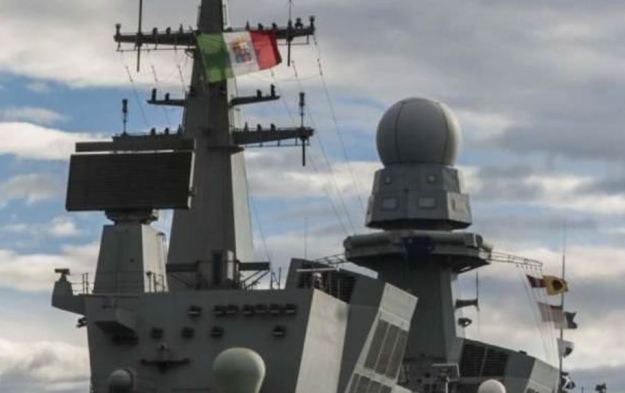
The RAN-40L alias MM/SPS-798 (MM stands for Marina Militare, a nomenclature for the Italian Navy, similar to the US-Army/Navy’s nomenclature AN/…) is an L-Band 3D Long Range Early Warning Radar with fully solid-state active phased array antenna using monopulse techniques. Radar coverage is obtained by phase-scanning in elevation, while mechanically rotating in azimuth. Source radartutorial.eu
| General data: | |
|---|---|
| Type: Radar | Altitude Max: 30480 m |
| Range Max: 398.2 km | Altitude Min: 0 m |
| Range Min: 0.4 km | Generation: Early 2000s |
| Properties: Identification Friend or Foe (IFF) [Side Info], Moving Target Indicator (MTI), Pulse Doppler Radar (Full LDSD Capability) |
| Sensors / EW: |
|---|
| RAN-40S – (Type 1850M VSR, RAT-31DL) Radar Role: Radar, Air Search, 3D Long-Range Max Range: 398.2 km |
Source cmano-db.com
RAN 30X/I surface radar
The RAN-30X surveillance radar represents the state of-the-art of 2D X-Band surveillance radars. It can operate as a primary sensor for combined surface and air surveillance on board patrol vessels or as a specialized anti-sea skimmer sensor on board major Surface Combatant Vessels.
RAN-30X features up to 4 operational roles:
▪ Surface and air surveillance mode (detection and tracking of small air/surface targets)
▪ Navigation and helicopter control (high antenna rotation speed for navigation close to the coastline)
▪ Over-the-horizon (OTH) detection (low antenna rotation speed and long range detection capability)
▪ Anti-sea skimmer missile detection. This mode has an high antenna rotation rate to ensure the detection and tracking of very small targets manoeuvring in clutter environment and featuring very low Radar Cross Section (RCS).
Each mode is designed with a proper set of transmitted waveforms.
The reflector antenna performs two different beams (in linear and circular polarisation) to cope with different applications:
▪ The first beam is a cosecant square one (up to 25°- beam width of elevation coverage) used in
Surveillance and Heli modes
▪ The second beam (providing a higher gain ) is a pencil beam one, applied for anti-missile detection and Over-the-Horizon mode.
The antenna is designed to house the IFF antenna in a back-to-back configuration.
RAN-30X receiver is designed to provide a very high linearity and sophisticated processing. It employs triple conversion with a carrier sample technique. An automatic and adaptive STC algorithm is implemented against the returns from clutters and wide target radar
cross sections. Source leonardocompany.com
Other systems include the Whitehead Alenia Sistemi Subacquei (WASS) SNA-2000 mine avoidance sonar, two radar / electro-optic fire control systems and a Galileo Avionica SASS (silent acquisition surveillance system) infrared search and track system.
Whitehead Alenia Sistemi Subacquei (WASS) SNA-2000 mine avoidance sonar
| General data: | |
|---|---|
| Type: Hull Sonar, Active-Only | Altitude Max: 0 m |
| Range Max: 1.1 km | Altitude Min: 0 m |
| Range Min: 0 km | Generation: Early 2010s |
| Sensors / EW: |
|---|
| SNA-2000/I – (Mine Avoidance Element) Hull Sonar, Active-Only Role: Hull Sonar, Active-Only Mine & Obstacle Avoidance Max Range: 1.1 km |
Source cmano-db.com
Galileo Avionica SASS
SASS is a new InfraRed Search and Track (IRST) system developed for the Italian flag ship: the aircraft carrier CAVOUR. SASS has been validated at sea by the Italian Navy and has been selected for the Italian Future European Multi Role Frigates (FREMM).
MAIN FEATURES
- High sensitivity/ high resolution/ dual band IR head
- Accurate stabilisation against sea motion
- Long range passive surveillance
- Automatic target detection and track initialisation
- Multi-target tracking of air and surface targets
- Panoramic and blown up images, in two different bands
- Flexible interface with other on-board systems and with
combat management systems
- High reliability and easy maintenance on-board.
Source leonardocompany.com
Source leonardocompany.com
Countermeasures
The carrier is fitted with two 20-barrel Oto Melara / Selex SCLAR-H decoy launchers for 105mm or 118mm multipurpose rockets. SCLAR-H provides fully automatic soft-kill defence against missile threats by confusion of enemy sensors before missile firing; decoying of the missile homing system during its flight and illumination of targets.
2 x 20-barrel Oto Melara / Selex SCLAR-H decoy launchers
Google translated – Use: SCLAR is a multiple rocket launcher system produced by Breda Meccanica Bresciana, generally used by ships to launch fake targets such as flares and chaff. It has a 105 mm caliber, which can be elevated and swiveled, and it can also launch explosive rockets within a 10 km radius. The launcher is designed for the accurate distribution of false targets, thus providing passive defense for the ship against radar and IR search missiles; the typical modes of operation (at various intervals) include: Confusion (dilution); concealment; Distraction; Dump;
Its main features are:
– possibility of loading different types of rockets simultaneously (Chaff, IR, bengal);
– automatic selection of rockets to launch;
– possibility of repeated engagements, due to the availability of a large number of rockets, loaded into individual sealed containers;
– automatic control by the ship’s electronic war suite;
– full coordination with the ship’s active defense systems; – operating capacity in all weather conditions and in NBC condition (automatic operation); Source digilander.libero.it
Two SLAT torpedo defence systems are installed. SLAT has been developed by EUROSLAT, a consortium consisting of WASS (Whitehead Alenia Sistemi Subaqua), DCN and Thales Underwater Systems.
2 x SLAT torpedo defence systems
Electronic countermeasures (ECM) and electronic support measures (ECM) systems have not been specified.
RESM – (Horizon, FREMM) ESM
| General data: | |
|---|---|
| Type: ESM | Altitude Max: 0 m |
| Range Max: 926 km | Altitude Min: 0 m |
| Range Min: 0 km | Generation: Early 2010s |
| Sensors / EW: |
|---|
| RESM – (Horizon, FREMM) ESM Role: ELINT w/ OTH Targeting Max Range: 926 km |
Source cmano-db.com
Cavour aircraft carrier propulsion
The Cavour is powered by combined gas turbine and gas (COGAG) propulsion. The four LM2500 gas turbines, developing 22,000kW each, are manufactured by FiatAvio of Turin under a licence agreement from the US company, General Electric (GE). The four turbines drive two gear units which provide 60,000shp each.
Auxiliary power is provided by six Wartsila CW 12V200 generating sets, rated at 2,200kW each. Two shaft generators are rated at 2,200kW each.
The vessel is fitted with two pairs of active stabilising fins and twin rudders and has bow and stern thrusters.

fincantieri.com
Main material source naval-technology.com
Images are from public domain unless otherwise stated
Main image WarshipPorn @reddit.com
Updated May 09, 2020







